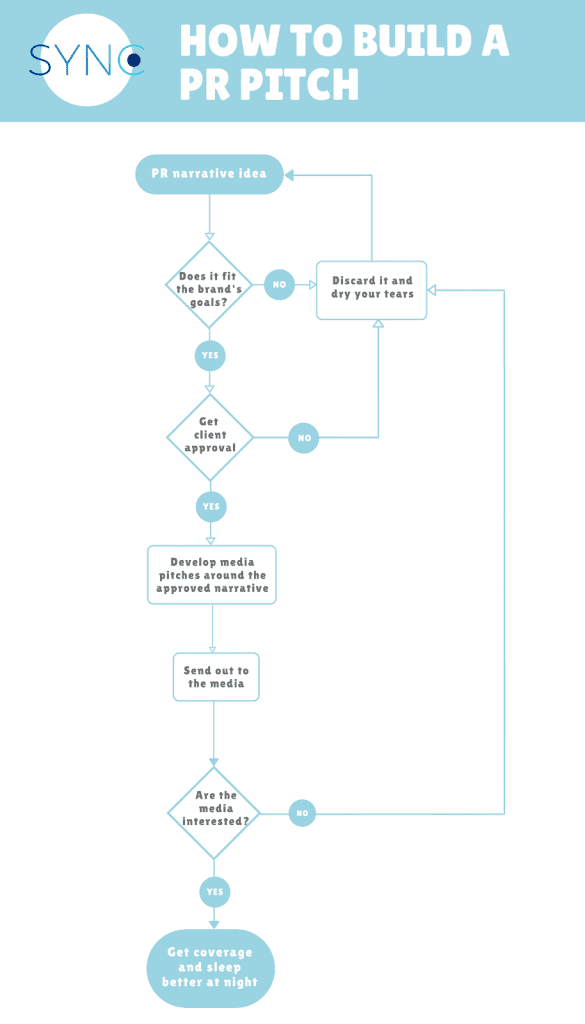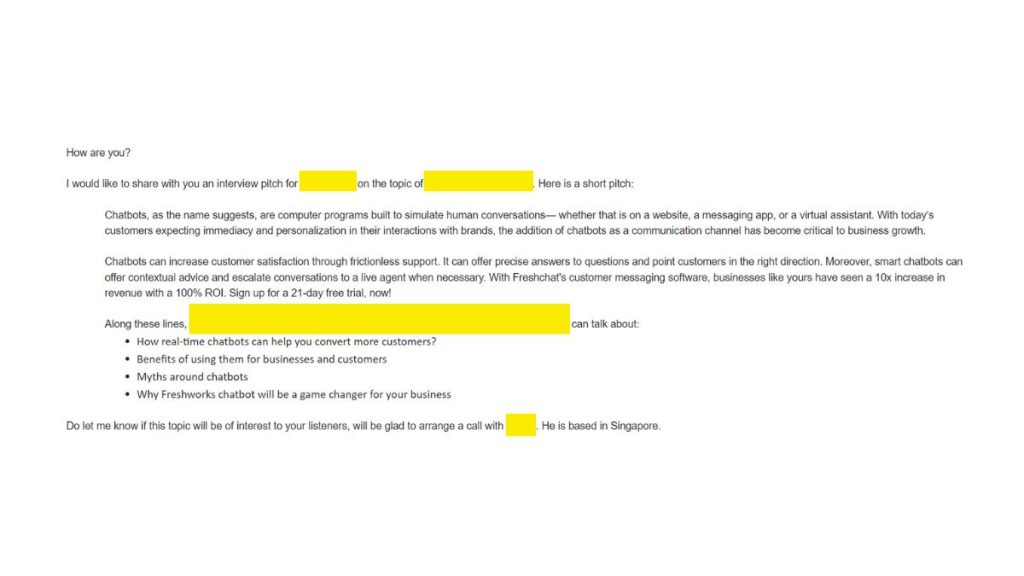The fine art of writing and pitching a story to impress upon another is often something that PR professionals spend years perfecting through research and relationship building. While there may not be any hard and fast rules, there are some basic do’s and don’ts of writing a media pitch.
This article oversees the techniques of writing a PR pitch, the common obstacles and pitfalls and offers suggestions to avoid them.
Techniques for crafting a better PR pitch
Essentially, we all want the same thing: for our stories to sell. While the ways to go about achieving that are certainly inexhaustive, here are some techniques to keep in mind:

Knowing your audience for a media pitch
A good PR pitch is one that is conscientious of its audience. It should be tailored to both the backgrounds of the journalist being pitched and that of the larger media platform they work for.
You can have the most outstanding pitch in the world, but if it doesn’t align with the journalist’s beat (the types of content they cover), or speak to the readership of the targeted platform, then it will not be of any value. In truth, it will only highlight that you have sent out mass email distributions and haven’t been doing the appropriate legwork or research. While it might not always be realistic or feasible, making your pitch topical and relevant to the recipient whenever possible will lend you a definite edge.
A snappy introduction
Contrary to popular belief, it is okay to be clickbaity — sometimes. Starting from the subject line, your introduction has to be so attention-grabbing that the dreaded ‘delete’ button doesn’t get hit before the email has even been opened. This does not necessarily mean dressing it up with cliches or puns — you need to summarise your story as succinctly as possible. Additionally, do not dwell on self-introductions; the faster you get to the story, the better.
For instance, take a look at Airbnb’s pitch. The biggest takeaway is that their intro is all about “the hook”! You need to describe your business with as few words as possible. Try telling a middle schooler what your business is about. If you are unable to do so, perhaps you should rethink your intro to your investors. Peppering your pitch with statistics and concrete facts is another way to make it engaging. While this isn’t exactly one of the media pitch examples, we prefer to look at how you can best capture your desired audience’s attention.

Use storytelling conventions
Applying traditional storytelling conventions to your PR pitch (just like an author would apply them to their novel) provides readers with a familiar structure, which may help them absorb the details of your story better or experience an unidentifiable familiarity.
Most importantly, storytelling conventions give you the structure to create your PR pitch. This is a time-saving and efficient method since you start with a cohesive structure that you know is easily digestible. From there, you can simply fill in the various elements of the story structure with information specific to your brand, completing the story. For more information on this, you can refer to our previous blog article on how storytelling conventions can be used in writing an effective PR pitch.
Common obstacles and pitfalls
According to Fractl, 57% of top-tier publishers receive between 50 and 500 pitches per week. At the same time, 7 out of 10 writers and editors write only one story per day. To be distinguished from the masses and deliver a winning pitch, PR professionals need to not only identify effective strategies but also avoid some of the common obstacles.
Avoid overgeneralization
This point ties back to that of personalizing your pitch. Emails that are clearly sent to a list of other reporters and appear as a generic press pitch are in no way attention-grabbing. In fact, they tend to make the journalist feel less like a priority. Journalists, like most human beings, like forming connections. Hence to create a connection with them, you need to make them feel special. If they think you’re sending the same exact pitch to other journalists and working with whoever will accept you first, chances are, they would not be compelled to work with you.

Knowing how to write well is critical
Typos are rarely forgivable, especially so when speaking to someone who writes for a living. Simple typos and grammatical mishaps can doom a pitch by ruining your credibility in the eyes of the recipient. Other factors such as the length and poor flow of a pitch email might deter the reader from taking any further action. In short, these easily avoidable errors not only show a lack of interest, but also preparation. If the journalist is taking the time to read your pitch, you should ensure it’s professional and concise. Proofreading once can go a long way.
Regardless of the industry that you’re in or represent, knowing how to effectively craft a pitch for the media is the most critical step to success in PR and content marketing.
We look at some of the emerging marketing trends amidst COVID-19.
In any case, create a pitch and have a go at this interactive flowchart we’ve created! Keen to learn more about the ingredients of a successful PR pitch? Drop us a message at [email protected]

